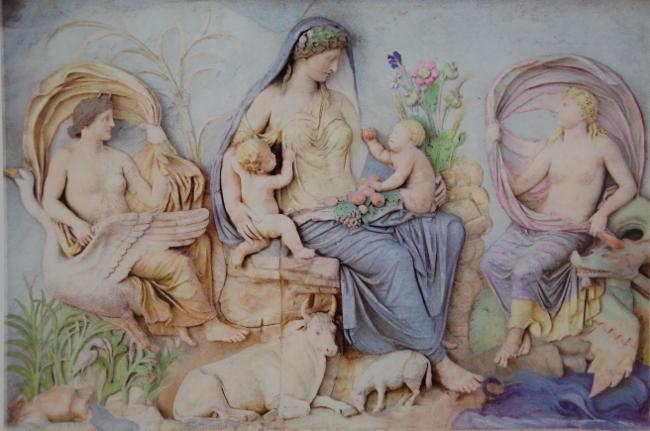V&A YEAR COURSES
Steve Kershaw is a tutor for the Classical World and it’s Afterlife, and Early Medieval: 300 - 1250 Year Courses at the Victoria and Albert Museum in London.
The Classical World and its Afterlife
Ancient Greece and Rome have provided a limitless source of inspiration for European art, design and architecture. THis course explores the key elements of Classicism, and their subsequent re-interpretation and revival in later times. Examine the cultural highlights of the Classical world, including Homeric myths and their representation in sculpture and vase-painting, and the architecture of Athens and Rome. The course then investigates the ways in which classical themes, motifs and styules were rediscovered.
Early Medieval: 300 - 1250
The period between 313 and 1250 is arguably the most varied in the history of European art and architecture. In the west it encompasses the Late Antique, Early Christian, Carolingian, Ottonian, Anglo-Saxon, Romanesque and Early to High Gothic periods, and, in the east, the Early and Middle Byzantine eras. This was an epoch that witnessed dramatic political change and was dominated by the burgeoning power of the church.
The Roman Empire disintegrated in the 5th century leading to the fragmentation of Western Europe, but the period that followed, described by conventional wisdom as the “Dark Ages”, saw the production of objects that reveal sophisticated taste and technical accomplishment. By 1000 stable nation states had emerged, and, simultaneously, a more international visual aesthetic was forged, through marriage alliances, pilgrimage, trade, and the Crusading movement which brought West and East into close contact with one another.
The course is focused upon the visual arts of this intriguing period, many of which are represented in the V&A’s abundant medieval collections: architecture and sculpture, metalwork and enamels, silks and embroidery, ivory carving and manuscript illumination, wall painting and mosaic. Contextual issues such as political structures and philosophical thought, patterns of patronage and devotion, and the inheritance of the Classical world are investigated, to interpret further the surviving artefacts and monuments. The materials and techniques employed by the typically anonymous, frequently monastic, craftsmen of the period are explored, and a series of case studies, revolving around works of seminal importance, provide a focus within the major themes of the course.
https://www.vam.ac.uk/event/Y24jmYXg/early-medieval-300-1250-2019-20
